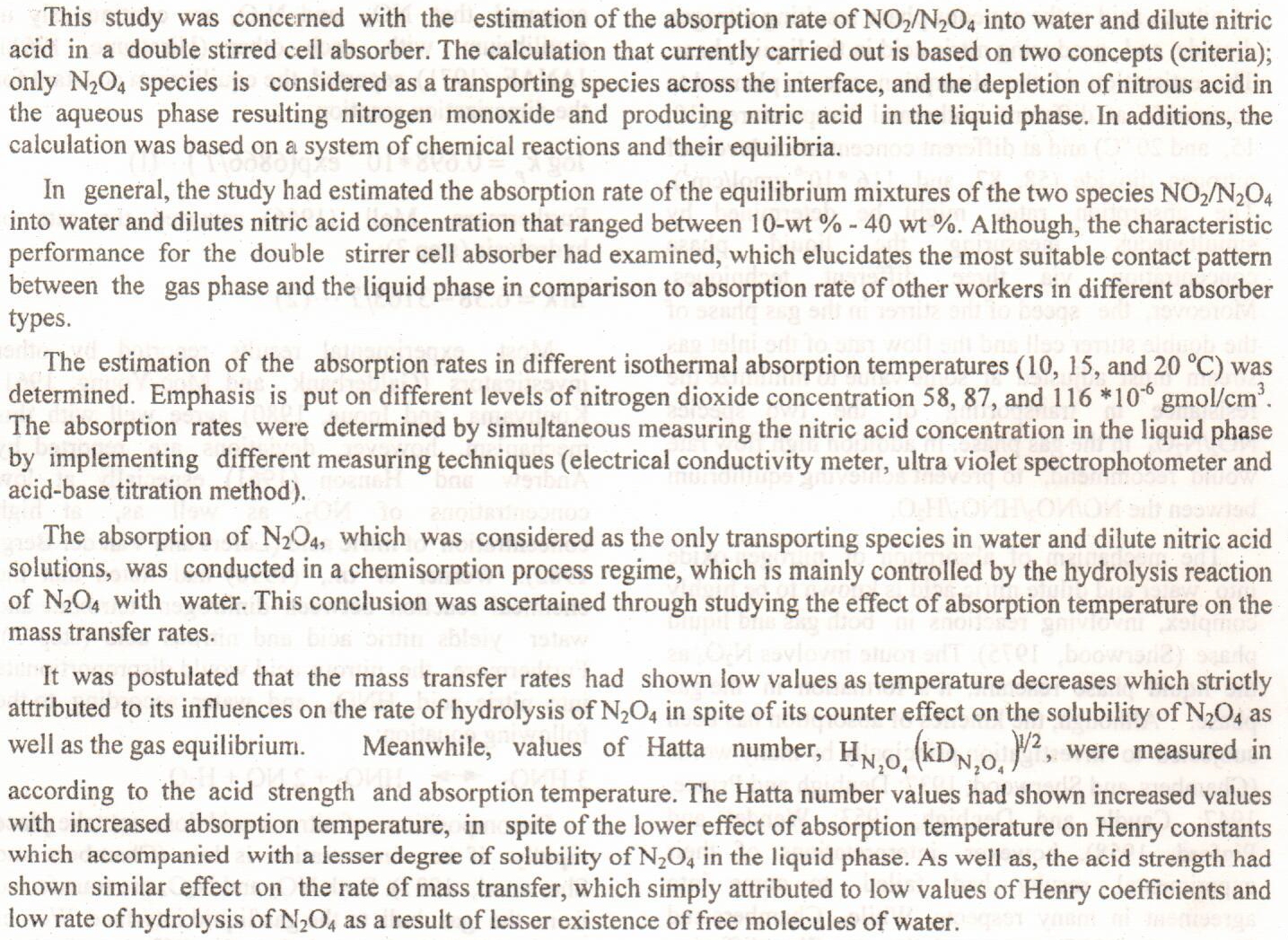
Heavy metals contamination in aquatic ecosystems is considered one of the most important threats of aquatic life. Submerge aquatic plants Ceratophyllum demersum in its non living form used for the removal of trace elements. This article studied the ability of the fine powder of C.demersum for the removal of some heavy metals (HM) like copper, cadmium, lead and chrome from aqueous solution with in variable experimental factors. The study occupy two treatments the first included different hydrogen ions pH within a range of 4, 5,6and 8 with a constant HM concentration (1000 ppm).While the second treatment represented by using variable HM concentrations within a range of (250,500,750and 1000 ppm) with a constant pH=7.In both treatments the a
... Show MoreThe current study suggested a thermal treatment as a necessary proactive step in improving the adsorption capacity of bio-waste for contaminants removal in wastewater. This approach was based on the experimental and histological investigation of biowaste pods shell. This investigation showed that these shells compose of parenchyma cells that store secondary metabolites compounds produced from cells were exhibited in present study. The results also reported that these compounds are extracted directly from the cells as soon as they are exposed to an aqueous solution, hampering their use as an adsorbent material. The increase in the weight of bio-waste adsorbent at unit liquid volume increases the production of secondary metabolites compounds
... Show More (7)
(7)
 (1)
(1)
This investigation pertains to the evaluation of water quality in SAWA Lake, located in the Al-Muthanna province of Southern Iraq, from 1977 to 2020. Understanding the water quality and assessments of this Lake is of great importance. The Lake is home to small, transparent, blind fish measuring approximately 10 cm and is often referred to as the "wonderful" or "strange" Lake due to its many unique features. The study focuses on several elements to represent water quality, including total dissolved solids (TDS), electrical conductivity (EC), pH, and temperature (T), which were measured directly in the field. Additionally, scientific concepts such as K+, Ca2+, Cl-, HCO
This study is conducted to investigate the validity of using different levels of Rustumiya sewage water for irrigation and their effects on corn growth and some of the chemical properties of the soil such as electrical conductivity and soil pH in extract soil paste , the micro nutrient content in soil and plant which are ( Fe , Mn , Zn , Cu , Cd , Pb ). Three levels of sewage water ( 0 , 50 , 100 )% in two stages were used ,the three levels of wastewater ( without soil fertilization ) were used in the first stage , Where 80 Kg N /D+50Kg P2O5 /D was added to the soil as fertilizer in the control (0%) treatment and 40 Kg N/D+25Kg P2O5/D were added to 50 and 100% levels in the second stage .Corn seeds were planted in 12kg plastic pots in Com
... Show MoreFrom the sustainability point of view a combination of using water absorption polymer balls in concrete mix produce from Portland limestone cement (IL) is worth to be perceived. Compressive strength and drying shrinkage behavior for the mixes of concrete prepared by Ordinary Portland Cement (O.P.C) and Portland limestone cement (IL) were investigated in this research. Water absorbent polymer balls (WAPB) are innovative module in producing building materials due to the internal curing which eliminates autogenous shrinkage, enhances the strength at early age, improve the durability, give higher compressive strength at early age, and reduce the effect of insufficient external curing. Polymer balls (WAPB) had been used in the mixes of thi
... Show MoreThis paper presents the thermophysical properties of zinc oxide nanofluid that have been measured for experimental investigation. The main contribution of this study is to define the heat transfer characteristics of nanofluids. The measuring of these properties was carried out within a range of temperatures from 25 °C to 45 °C, volume fraction from 1 to 2 %, and the average nanoparticle diameter size is 25 nm, and the base fluid is water. The thermophysical properties, including viscosity and thermal conductivity, were measured by using Brookfield rotational Viscometer and Thermal Properties Analyzer, respectively. The result indicates that the thermophysical properties of zinc oxide nanofluid increasing with nanoparticle volume f
... Show More (2)
(2)
 (1)
(1)
 (2)
(2)
